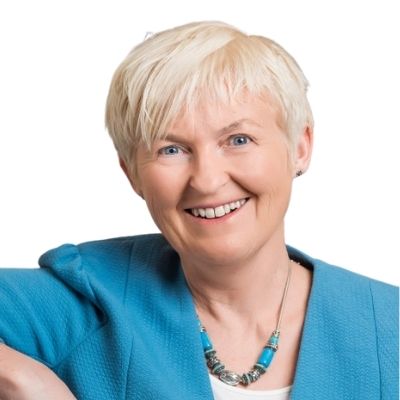Now in its 25th year, Science Week takes place November 8 – 15. The central theme for this year is ‘Choosing our Future’, a focus on how science can improve our lives in the future, and in the present.
Since the first IVF baby was born in 1978, remarkable scientific advances have been made in embryology, IVF treatment and fertility preservation. These scientific breakthroughs have helped millions of people around the world to fulfil their dreams of parenthood.
So in celebration of this Science Week, Clinic Director Prof Mary Wingfield discusses advances in ovarian reserve testing, and how this can empower women to make informed decisions about their future fertility.

In this excerpt from her comprehensive guide to fertility: ‘The Fertility Handbook’ (Gill Press), Prof Mary Wingfield explains what is meant by the term ‘ovarian reserve’ and how this is measured in the clinic.
Ovarian Reserve
A woman is born with all her eggs in her ovaries (contained in sacs called follicles) and that the number diminishes over time until by the time of menopause all her eggs have become atretic and no longer function. This process happens faster in some women than others. Some women are lucky and continue to have lots of follicles and lots of eggs in their ovaries until their mid-forties; other women will see a significant decline in their late twenties and early thirties.
Ovarian reserve is a term used to denote the number of eggs a woman may have left in her ovaries. For women with fertility problems it is important to know this as it gives us an idea as to how much time that woman has left in which she will be fertile.
Measuring ovarian reserve can’t tell us exactly how long a woman has, but it gives us an indication. However, it is important to remember that the number of eggs is just one parameter – the quality of the eggs is possibly more important than the number and quality is principally related to the woman’s age; it starts to decline around 30 and declines quickly after 37 or so.
We can estimate a woman’s ovarian reserve by counting the number of follicles in her ovaries or by measuring the level of hormone AMH in her blood.
Antral follicle count
The eggs in a woman’s ovaries are microscopic and cannot be seen. However, they are stored in small fluid-filled sacs called follicles and these follicles are visible on an ultrasound scan. These follicles can vary in size and if a woman is ovulating, one follicle grows during her menstrual cycle and, at ovulation, bursts and releases an egg. However, the follicles that we are interested in when we are looking at ovarian reserve are the tiny follicles that have not yet started to grow. These are called antral or pre-antral follicles and they are small, measuring less than 9 mm (a follicle that is about to ovulate generally measures 17–22 mm).
We like to see six or seven of these small follicles on each ovary and a normal antral follicle count (AFC) would be regarded as approximately 14. The count takes in the number of follicles in each ovary, so if we have six on one ovary and seven on the other, that antral follicle count is 13. An AFC of less than eight is worrying as it suggests that the woman may be running out of eggs. In contrast, women with polycystic ovaries have large numbers of follicles and eggs in their ovaries and these women would have a very high antral follicle count (often over 40).
AMH
AMH (anti-Mullerian hormone) is a hormone produced by cells surrounding the egg in the antral follicles. In keeping with the decline in follicles, AMH declines with age. It is at its peak when a woman is in her mid-twenties and reaches zero by the time of menopause.
In recent years, AMH has become one of the most important blood tests we do. It helps estimate whether a woman needs to hurry up with treatment or whether she can relax a bit and, in IVF and ovulation induction treatments, it helps us decide the most appropriate dose of drugs for the woman. It is also of benefit if a woman is considering freezing her eggs.
As with AFCs, a low AMH level can indicate a risk of ovarian insufficiency or early menopause, while women with polycystic ovaries typically have a high AMH level.
SHOULD ALL WOMEN CHECK THEIR OVARIAN RESERVE?
This is a controversial question and one which needs to be addressed in the next few years. The advantages of knowing one’s ovarian reserve are that it might help a woman plan her reproductive life. One would hope that women with a low reserve would prioritise child bearing, or at least freezing their eggs. However there is a risk that women with a good ovarian reserve might be falsely reassured and think they are fine, even though because of their increasing age alone their fertility is diminishing, despite having lots of eggs – there is no value in having lots of eggs if they are poor quality.
There is also a growing concern among healthcare professionals that having an AMH test (or other test of ovarian reserve) may be very stressful for some women, particularly young women who have not yet found a partner. We at MFC have done some preliminary research in this area that shows that finding out that one has a low reserve can be devastating for women, particularly if they are not yet in a position to conceive. We also know that some women with a low reserve will have no difficulty conceiving (they may have few eggs but they may be excellent quality) so there is a risk that we could worry these women unnecessarily. However, our research also showed that, on balance, women would prefer to have this information
